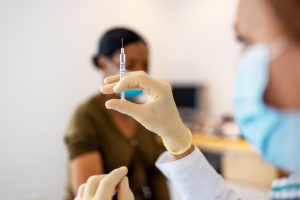Pandemic Preparedness
Pandemic Preparedness is at the very center of Emergency Preparedness for healthcare settings. Pandemics are not a possibility; they are a reality that requires adequate preparation. The ongoing challenges posed by the COVID-19 pandemic have proven the need for a comprehensive, methodical, and resilient approach to pandemic preparedness. With proper planning, training, and collaboration of resources, healthcare personnel and facilities can respond appropriately to any potential pandemic threat, protect patient and personnel safety, and reduce transmission of infectious diseases.
Core Definitions
The Centers for Disease Control and Prevention (CDC) has created extensive resources to assist healthcare facilities and public health authorities with the investigation and management of pandemics and other infectious disease outbreaks. In order to ensure each pandemic is properly investigated, a core set of definitions must be established. This common framework of definitions ensures consistency in the approach to pandemic preparedness and also an appropriate detection of outbreaks and pandemics across the healthcare continuum of care.
The following definitions are critical to the prevention and management of pandemics:

- Pandemics
- Outbreaks
- Clusters of Illness
- Pseudooutbreaks
- Prevention
- Protection
- Mitigation
- Risk Assessments
- Frameworks
- Pandemic Severity Index
Principles of Emergency Management in Healthcare & National Frameworks
The Federal Emergency Management Agency (FEMA) is the chief federal agency responsible for emergency response. FEMA coordinates both disaster preparedness and responses and works with each individual state and federal territorial to deliver any necessary resources based on the specific type of incident. In order to ensure all resources are coordinated appropriately, FEMA utilizes the National Incident Management System or NIMS. NIMS is utilized not only by all federal agencies involved in pandemic preparedness and response, but it is also followed by state and local agencies in order for consistent disaster nomenclature to be used. The NIMS system is used by the Emergency Operations Centers (EOCs) of the Federal Emergency Management Agency, Centers for Disease Control and Prevention, and Department of Health and Human Services. This consistent training ensures a smooth, efficient, and swift response is available for any potential pandemic or other disaster with federal implications. NIMS training is available free of charge to all healthcare providers, public health personnel, and healthcare facilities.

State / Regional / Facility-Level Frameworks
The involvement and partnership of state, local, and individual healthcare systems is invaluable in the pandemic preparedness process. State hospital associations play a role in preparedness by offering training and additional physical resources for hospitals within their region. This multi-tiered strategy is necessary to appropriately prepare healthcare facilities and providers for the realities of a future pandemic. An “all-hazards” approach to pandemic preparedness ensures that healthcare facilities are appropriately prepared for any potential pandemic, infectious disease threat, or other disaster that will require some type of public health and medical response. This type of response requires a more comprehensive approach to preparedness that goes far beyond training, and includes exercises such as table-top exercises, physical drills, and program evaluation to ensure constant readiness.

















